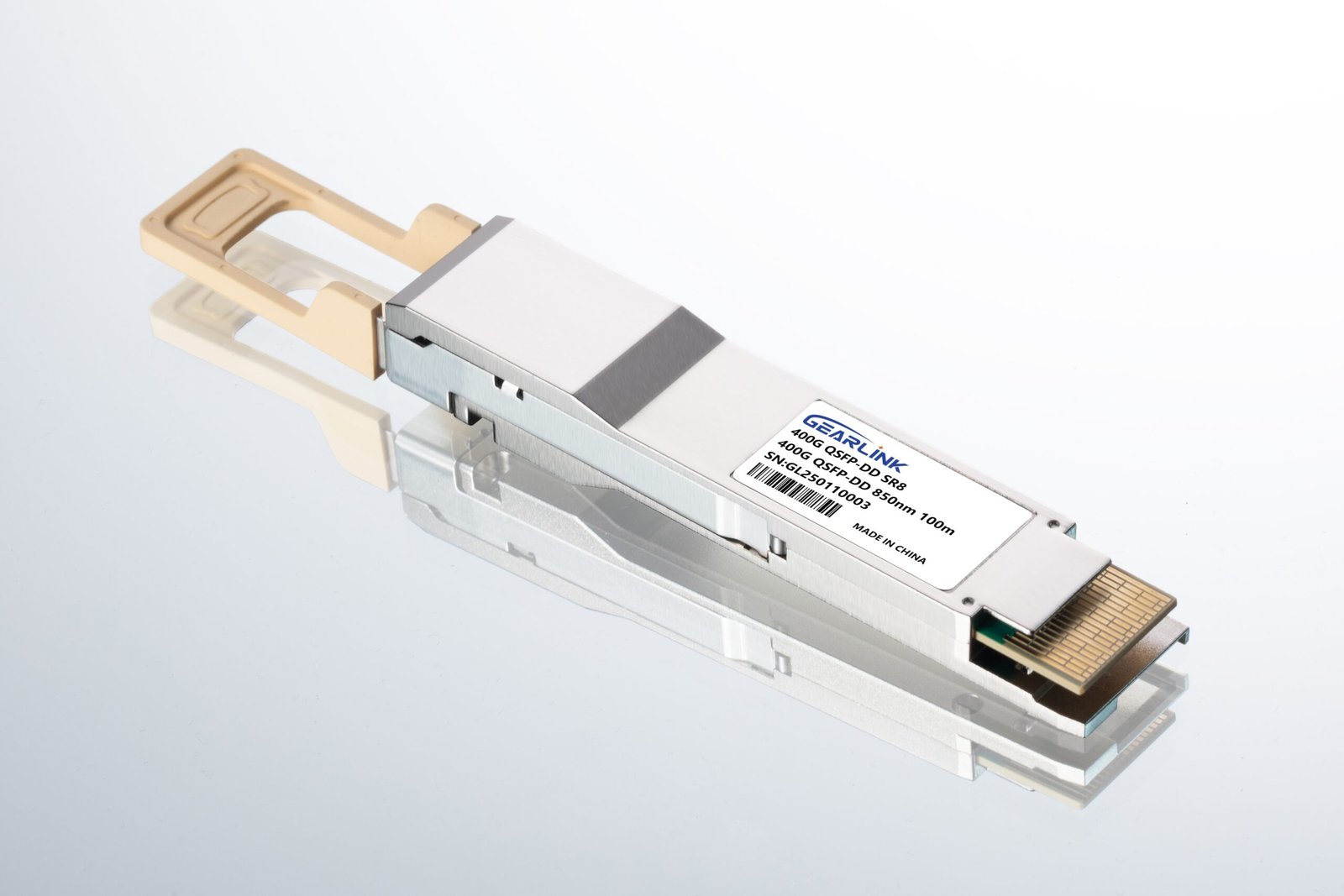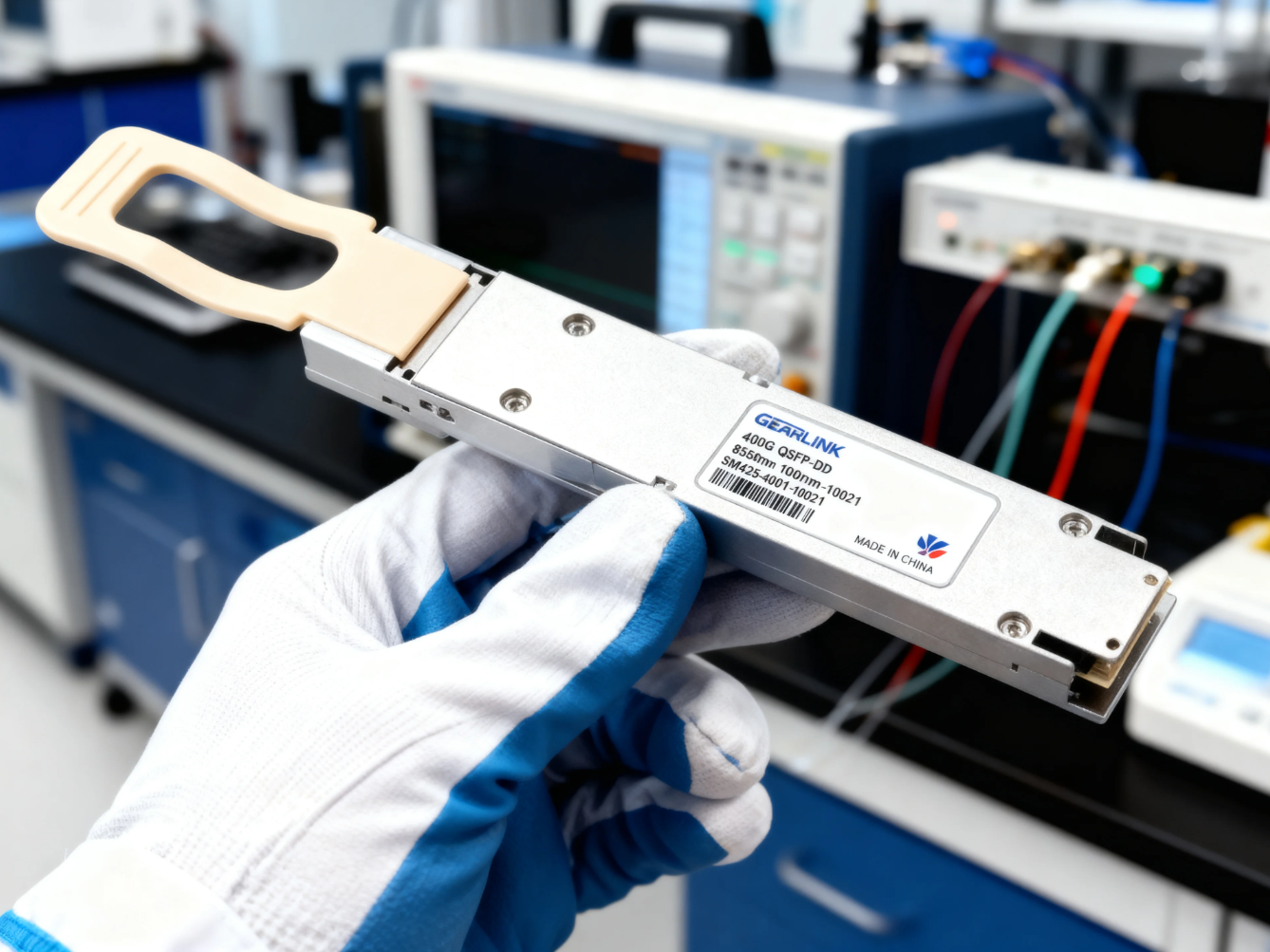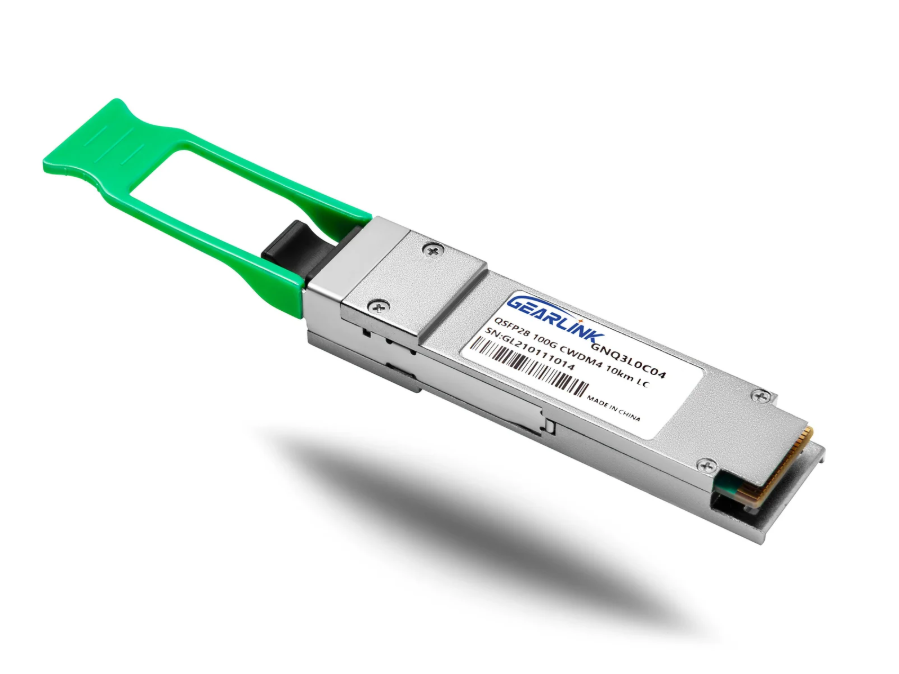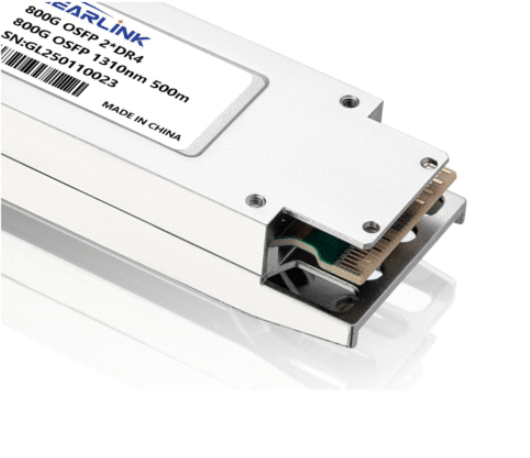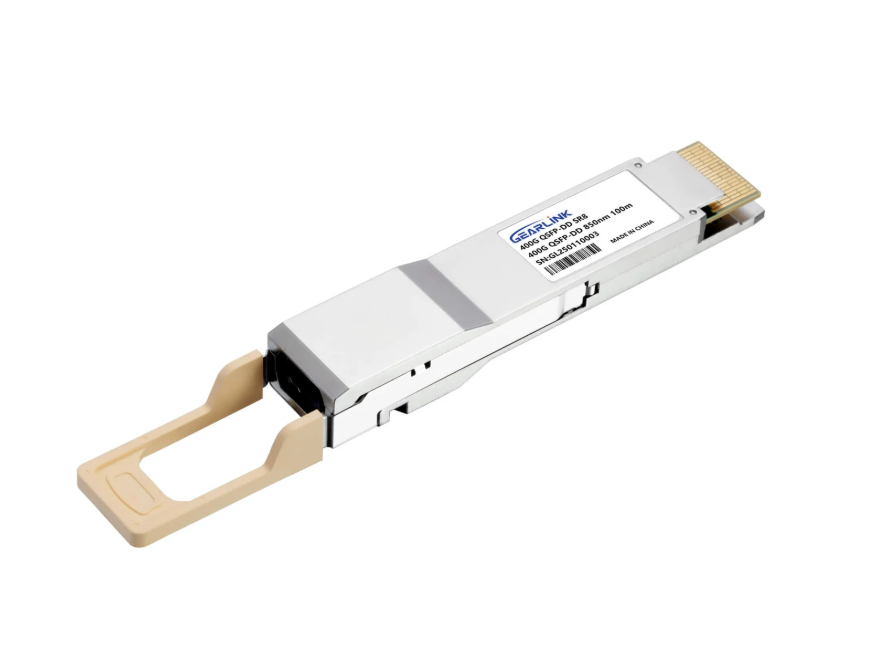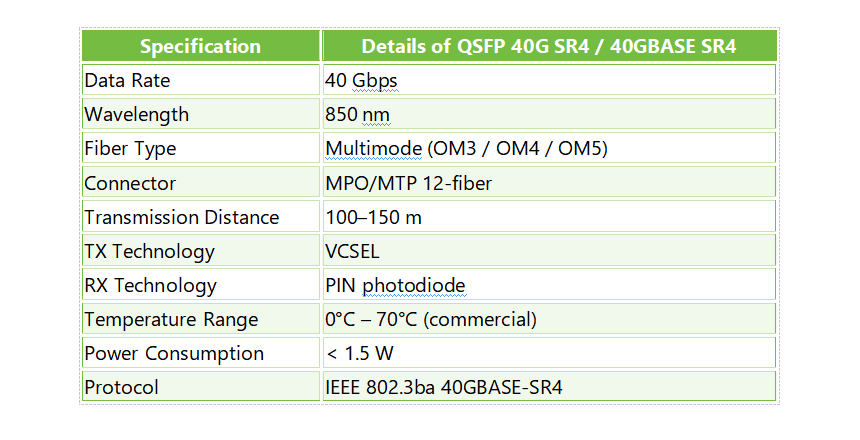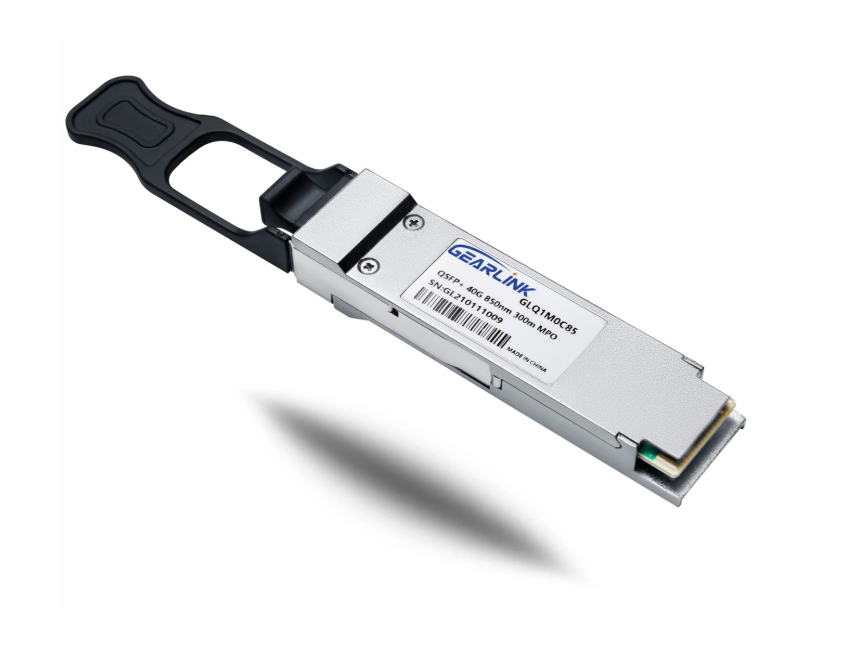1. Product Overview
1.1 400G QSFP-DD SR8 Optical Transceiver
Overview:
- Designed based on the SR8 architecture, tailored for data centers and high-performance interconnects.
- Utilizes the QSFP-DD standard interface, suitable for high-density port deployments.
Specifications:
- Data Rate: Supports 400G high-speed transmission per module.
- Channel Configuration: High-density 8-channel parallel design, conserving space and enhancing connectivity.
- Transmission Distance: Ideal for short-reach interconnects within data centers.
- Wavelength and Modulation: 850nm wavelength with 50G PAM4 modulation, offering stable performance and cost advantages.
Key Features:
- Transmission Efficiency: 50G PAM4 modulation technology effectively enhances transmission efficiency.
- High Bandwidth: Delivers substantial bandwidth per module, accommodating large-volume data exchanges.
- Stability and Reliability: Proven through customer-side testing, ensuring sustained high-load operation. Excellent Compatibility: Compatible with various mainstream switches.
Application Scenarios:
- Core interconnects in data centers, cloud computing, high-performance computing, and RoCE networking solutions.
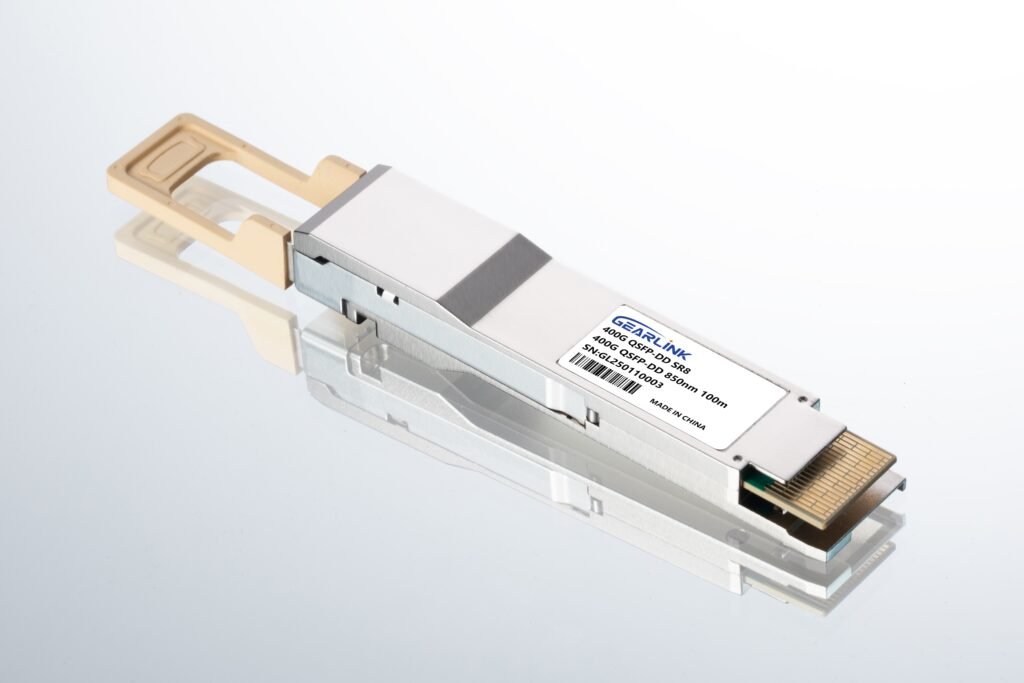
1.2 400G QSFP-DD to 2×QSFP56 Active Optical Cable (AOC)
Overview:
- Converts a 400G QSFP-DD interface into two 200G QSFP56 interfaces, meeting multi-port access requirements.
- Active transmission extends reach beyond that of passive copper cables.
Specifications:
- Rate Conversion: Efficiently splits 400G into 2×200G.
- Interface Configuration: One end with QSFP-DD; the other end provides two standard QSFP56 interfaces.
- Transmission Stability: Integrated design ensures low bit error rate and stable optical signal transmission.
- Cable Characteristics: Designed for in-rack or short-distance interconnects, suitable for high-density data center environments.
Key Features:
- Cost-Effective: Integrated active design reduces costs compared to traditional module and separate fiber connections.
- Easy Installation: Plug-and-play, requiring no complex debugging, facilitating rapid data center interconnect deployment.
- Energy Efficient: Low power consumption design aligns with green data center development goals. High Reliability: Military-grade manufacturing processes ensure stable operation in harsh environments.
Application Scenarios:
- Suitable for direct server connections, edge computing, and high-density data access scenarios, enabling end-to-end high-speed data transmission.
2. Port Features of H3C S9825H Switch and CX6 Network Card
2.1 H3C S9825H Switch:
- Equipped with standard QSFP-DD high-speed optical ports, designed for 400G transmission.
- Ports feature high-density layout and excellent thermal management, ensuring stable operation of optical transceivers. Seamlessly compatible with 400G QSFP-DD SR8 optical transceivers for efficient core interconnects.
2.2 CX6 Network Card:
- Utilizes 200G QSFP56 packaging, ensuring protocol consistency with active optical cables and optical transceivers.
- High-speed, low-latency characteristics meet direct connection requirements between endpoints and upper-layer devices.
- Interface design supports various networking solutions, ensuring overall system efficiency.
3. Connectivity Solutions
3.1 Solution 1: 2-Tier Clos TH4+TD4 Network Architecture
Access Capability:
- Supports up to 1,024 200G port connections, suitable for medium to large-scale data centers.
Equipment Composition:
- SSpine Layer: S9825-64D devices, achieving high-speed interconnects via 400G QSFP-DD SR8 optical transceivers.
- Leaf Layer: S9855-24B8D devices, offering high port density and flexible access.
Connection Method:
- Spine to Leaf: Connected using 400G QSFP-DD SR8 optical transceivers and MPO-16/APC multi-core optical cables.
- Leaf to Server: Utilizes 200G QSFP56 AOC active optical cables for short-distance, high-efficiency transmission.
Advantages:
- Dedicated optical transceivers and active optical cables ensure low latency and high bandwidth.
- Clear hierarchical structure facilitates system management, expansion, and fault isolation.
3.2 Solution 2: 2-Tier Clos TH4+TH4 Network Architecture
Access Capacity:
- Supports up to 4,096 200G port connections, catering to ultra-large-scale data centers.
Equipment Composition:
- Both Spine and Leaf Layers: Employ S9825-64D devices, achieving uniform equipment models.
- Interconnects continue to use 400G QSFP-DD SR8 optical transceivers, ensuring high-speed transmission.
Connection Method:
- Spine to Leaf: Connected via 400G QSFP-DD SR8 optical transceivers, ensuring backbone network stability.
- Leaf to Server: Employs 400G QSFP-DD to 2×200G QSFP56 AOC active optical cables for efficient split connections.
- CX6 network card ports utilize 200G QSFP56 packaging.
Advantages:
- Uniform equipment simplifies management and reduces compatibility risks.
- Massive port access capacity provides ample expansion space for future network upgrades. High-performance interconnect solutions ensure low latency and high reliability across the entire link.
4. Conclusion
Core Role of Optical Transceivers:
- The 400G QSFP-DD SR8 optical transceiver serves as a critical component for network interconnects, enabling high-speed, low-latency data transmission.
- In conjunction with 400G QSFP-DD to 2×QSFP56 AOC active optical cables, it ensures high-performance across the entire link.
Product Advantages:
- Low latency and high bandwidth provide robust support for core data center interconnects.
- Engineering-grade stability and high compatibility ensure optimal performance across various networking solutions.
Flexible Connectivity Solutions:
- The 2-Tier Clos TH4+TD4 solution suits medium-sized data centers, with 1,024 port access meeting growing business demands.
- The 2-Tier Clos TH4+TH4 solution offers up to 4,096 port access for ultra-large-scale data centers, aligning with future development trends.
- Both solutions utilize 400G QSFP-DD SR8 optical transceivers as core interconnect mediums, ensuring low-latency, efficient network operations.
Significant Application Value:
- n RoCE networking solutions, high-quality optical transceivers and active optical cables achieve high-density, high-speed interconnects.
- Features such as low power consumption, low latency, and high reliability provide stable, efficient interconnect solutions for data centers, cloud computing, and high-performance computing.
- As business demands evolve, optical transceivers and active optical cables will see broader applications in future network architectures, becoming key components for upgrades.
The 400G QSFP-DD SR8 optical transceiver, along with its compatible active optical cables, stands out for its exceptional transmission performance and reliable engineering design. It has become a vital choice for constructing low-latency, high-speed data center interconnects. Whether for medium-sized data centers or ultra-large-scale cloud computing platforms, these products offer ample expansion capabilities and superior interconnect performance, aiding enterprises in building efficient, green, and intelligent future networks.
